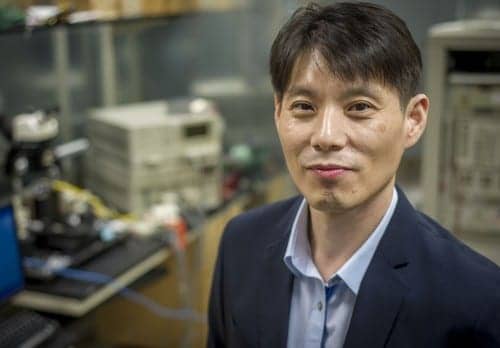An electrical engineering researcher at the University of Texas at Arlington is developing more efficient, low-power integrated circuits for better hearing aids based in part on information gathered from studies of a tiny, parasitic fly. According to an announcement from UT Arlington, Sungyong Jung, PhD, an associate professor of electrical engineering, received a two-year, $144,000 grant from the Korean Electrotechnology Research Institute to build an integrated circuit for a tiny microphone.
The microphone Jung is building would mimic the auditory system of an Ormia ochracea – a parasitic fly known for its exceptional directional hearing. This same fly has been the subject of other hearing research studies focused on improving directionality in hearing instruments, as described in an October 2001 article in The Hearing Review.
“Dr Jung’s research is a wonderful example of how UT Arlington engineering faculty and their students are developing solutions that address critical issues in the area of health and the human condition,” Khosrow Behbehani, dean of the UT Arlington College of Engineering, said. “A very important element in design of implants aimed at improving hearing is miniaturization. Minimizing the size while maintaining the highest level of function is a highly rewarding challenge that Dr Jung is undertaking.”
According to the UT Arlington announcement, Jung’s goal is to build a tiny integrated circuit and new microphone that can adopt the human ear’s non-ideal characteristics to provide the user with better, more defined directional hearing. The research would represent a significant advancement from over-the-ear hearing aid systems.
“Even the smallest standard directional hearing aids really are still too bulky and they cannot reside comfortably on the user’s ear for a long time,” Jung said. “The new system will be highly efficient and allows the size of the hearing aid to be reduced. I am going to design the integrated circuits for it by developing novel circuits that combine an amplifier and an analog-to-digital converter in one form as part of the integrated circuit development.”
Jung reported that a direction-tracking algorithm also would be installed in the new integrated circuit. He explained that hearing directionally in a small form factor is a key improvement to the new system. Jung and his research team also reportedly plan to develop a new electronic component for the hearing aid device that covers a wide range of sounds to provide better listening for music, and that is compatible with IoT-ready electronic devices and can be controlled by a smartphone.
Source: University of Texas at Arlington (UT Arlington)
Photo credit: University of Texas at Arlington





